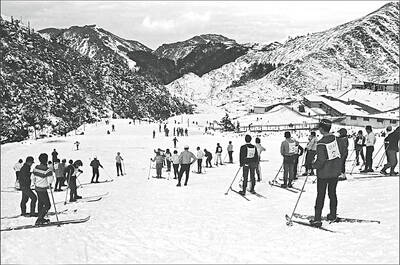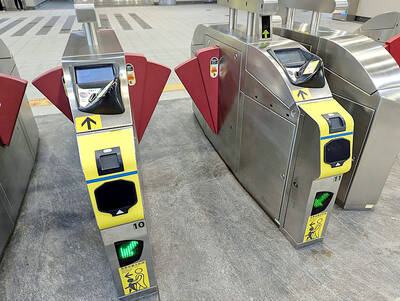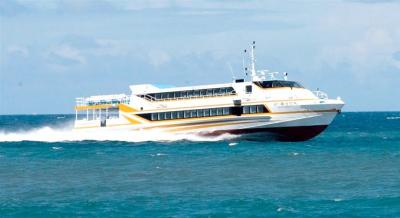In the recently finalized version of the Executive Yuan’s proposal to downsize, the Overseas Compatriots Affairs Commission (OCAC) managed to escape being merged with the Ministry of Foreign Affairs (MOFA), as originally planned.
Analysts said the decision was the “result of a compromise,” a comment echoed by government officials, reached because of the enormous pressure wielded by overseas Chinese groups.
Kwan Yuk-noan (關沃暖), a former legislator-at-large representing Chinese Nationalist Party (KMT) overseas compatriots, said President Ma Ying-jeou’s (馬英九) last-minute change of plan prevented the adverse consequences it would have brought to the country.
“I am glad that [Ma] came around to appreciate the contributions to the establishment of the Republic of China [ROC] made by overseas Chinese in the past and the help they give to the country nowadays,” said Kwan, one of the many people who pushed for the reversal of the merger decision.
The way Kwan sees overseas Chinese is well represented in the saying, “Overseas Chinese are the Mother of Revolution,” which is cited by many others to justify the importance in maintaining the OCAC as an independent organ subordinated to the Cabinet.
Sun Yat-sen (孫逸仙), founder of the KMT and the ROC, coined the saying in recognition of the monetary support and other resources that poured in from overseas Chinese communities for the 1911 Chinese revolution that overthrew the Qing Dynasty.
Against that backdrop, the OCAC was established in 1932 to serve the country’s overseas compatriots, a population estimated by the OCAC at between 38 million and 40 million.
“It’s ridiculous to claim that [Taiwan] has 38 million overseas compatriots,” said Chang Fu-mei (張富美), who served as chairwoman of the OCAC for eight years under the former Democratic Progressive Party administration.
Chang said she agreed with the government that it was premature to merge the OCAC with MOFA, but said “that should be a goal to continue to strive after.”
“We can’t count all people of Chinese ancestry as our compatriots. The [KMT] has said that there are about 10 million overseas compatriots in Thailand and Indonesia, but most of them do not see Taiwan as their country,” Chang said.
She said that a rational estimation of the country’s overseas compatriots was around 1 million, including possible growth since 1982 when the US started granting immigration to a maximum of 20,000 people from Taiwan each year.
“It’s unwise to have a standalone department for 1 million nationals,” Chang said.
Chang, however, said that the government wouldn’t be able to push through the merger until it could improve disharmonious relationships between overseas compatriot communities and MOFA.
“There has been a very general understanding among overseas compatriots that MOFA always has reservations about interaction with them. For many of them, MOFA only has eyes on officials with other governments and fails to recognize the diplomatic efforts made by overseas compatriots,” Chang said.
Among the 37 Cabinet-level institutions, the OCAC is generally considered of secondary importance in terms of budget. It receives NT$1.3 billion (US$36.9 million) annually, while MOFA receives NT$28 billion.
One reason for that could be the fact that less than 40,000 overseas compatriots return to vote in national polls, or about 0.002 percent of the country’s eligible voters, while an absentee voting system hasn’t yet been established.
Liao Da-chi (廖達琪), director of the Institute of Political Science at National Sun Yat-sen University, said that it was a pity that over the years the government hasn’t been able to put more emphasis on the OCAC to bring the value of the agency into full play.
As one of the experts that the Cabinet’s Research, Development, and Evaluation Commission consulted when drawing up the proposal, Liao said that she agreed with the decision to keep the OCAC separate.
Given the diplomatic situation facing Taiwan, the OCAC could serve to undertake diplomatic missions that the country’s diplomatic officials might not be able to perform, Liao said.
“The connections overseas compatriot communities have established in other countries are worth developing. If the OCAC is merged with MOFA, the limitations put on diplomats would extend to OCAC personnel,” Liao said.
Former president Lee Teng-hui’s (李登輝) visit to his alma mater Cornell University in 2001 and the South African government offering Taiwanese citizens visa-free treatment for two years from 2003 to 2005 were often cited as examples of diplomatic achievements for which the overseas compatriot community should take credit.
Shih Cheng-feng (施正鋒), a political commentator at National Dong Hwa University, insisted that the OCAC should integrate with MOFA into a single department in charge of all of the country’s foreign affairs.
“It doesn’t make any sense to have an independent government department and use taxpayers’ money to take care of the benefits of these so-called overseas compatriots who are not nationals of the country,” Shih said.
Shih asked: “Could it be that we have to evacuate all the overseas Chinese in Indonesia if there is violence there, for example, if they are counted as Taiwanese nationals.”

A strong continental cold air mass and abundant moisture bringing snow to mountains 3,000m and higher over the past few days are a reminder that more than 60 years ago Taiwan had an outdoor ski resort that gradually disappeared in part due to climate change. On Oct. 24, 2021, the National Development Council posted a series of photographs on Facebook recounting the days when Taiwan had a ski resort on Hehuanshan (合歡山) in Nantou County. More than 60 years ago, when developing a branch of the Central Cross-Island Highway, the government discovered that Hehuanshan, with an elevation of more than 3,100m,

Death row inmate Huang Lin-kai (黃麟凱), who was convicted for the double murder of his former girlfriend and her mother, is to be executed at the Taipei Detention Center tonight, the Ministry of Justice announced. Huang, who was a military conscript at the time, was convicted for the rape and murder of his ex-girlfriend, surnamed Wang (王), and the murder of her mother, after breaking into their home on Oct. 1, 2013. Prosecutors cited anger over the breakup and a dispute about money as the motives behind the double homicide. This is the first time that Minister of Justice Cheng Ming-chien (鄭銘謙) has

TRANSPORT CONVENIENCE: The new ticket gates would accept a variety of mobile payment methods, and buses would be installed with QR code readers for ease of use New ticketing gates for the Taipei metro system are expected to begin service in October, allowing users to swipe with cellphones and select credit cards partnered with Taipei Rapid Transit Corp (TRTC), the company said on Tuesday. TRTC said its gates in use are experiencing difficulty due to their age, as they were first installed in 2007. Maintenance is increasingly expensive and challenging as the manufacturing of components is halted or becoming harder to find, the company said. Currently, the gates only accept EasyCard, iPass and electronic icash tickets, or one-time-use tickets purchased at kiosks, the company said. Since 2023, the company said it

Ferry operators are planning to provide a total of 1,429 journeys between Taiwan proper and its offshore islands to meet increased travel demand during the upcoming Lunar New Year holiday, the Maritime and Port Bureau said yesterday. The available number of ferry journeys on eight routes from Saturday next week to Feb. 2 is expected to meet a maximum transport capacity of 289,414 passengers, the bureau said in a news release. Meanwhile, a total of 396 journeys on the "small three links," which are direct ferries connecting Taiwan's Kinmen and Lienchiang counties with China's Fujian Province, are also being planned to accommodate